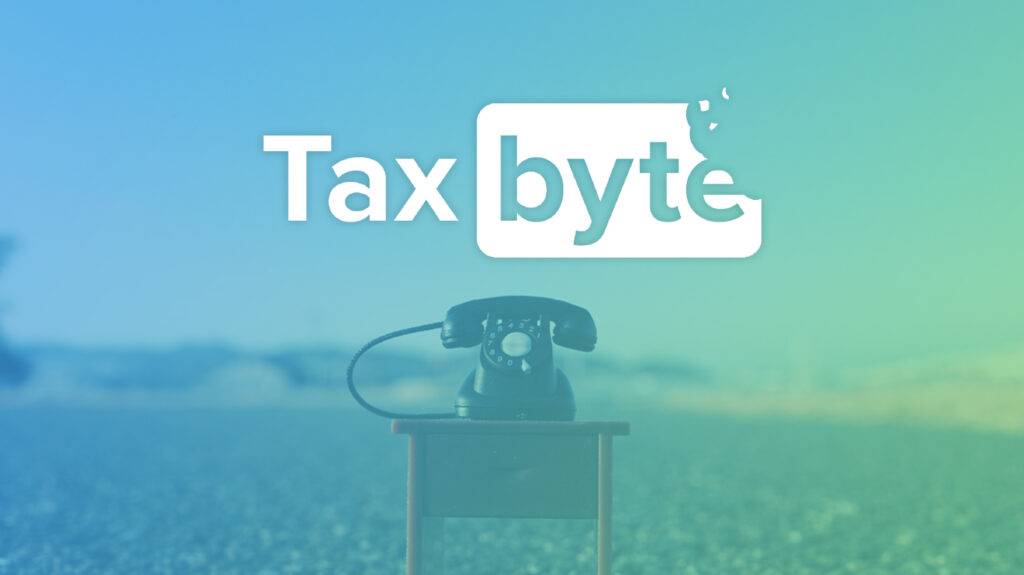
- |
- TaxByte
The Senate Finance Committee's version of the One Big Beautiful Bill Act (OBBBA) passed in
5 min read

Last week, while the family and I were getting poison ivy camping in Maine, the National Taxpayer Advocate (NTA) Erin M. Collins released her statutorily mandated mid-year report to Congress. And by family, I don’t mean “The Family” as in the Mob. I’m not sure how much camping they do anyway, though I’m sure they do end up in the woods a fair amount. No, I mean my husband and our four wild, smart-mouth boys. Same thing, maybe.
For background, the NTA is required by statute to submit two reports to Congress each year: an annual report issued in January and an objectives report, issued in June. These reports, as required by statute, are delivered to the Senate Finance Committee and the House Ways and Means Committee without any prior review or comment from the IRS Commissioner, the IRS Oversight Board, the Treasury Secretary or any other Treasury officer or employee or the Office of Management and Budget.
While the largely optimistic NTA Objectives Report to Congress – Fiscal Year 2024 released by Collins on June 21 contains plenty of good news about the IRS’s various improvements during the 2023 filing season, she keeps it real about just how far the IRS still has to go. I’d encourage you to read the full report at the link above for a deeper understanding of what improvements the IRS has been diligently working on… and in some cases perhaps more accurately described as those it’s working toward working on. But in case you’re thinking, come on, Jessica, that’s what we’ve got you for — I’ll give you the quick and dirty below.
“For millions of taxpayers, interacting with the IRS during the last three years has been a miserable experience,” Collins wrote. (It’s true.) “This year, for the first time, the clouds are beginning to part, and I can see some blue sky,” she added.
One of the most noteworthy improvements seen by taxpayers and tax pros alike during the 2023 tax filing season was the increased ability to actually get ahold of someone at the IRS. Overall, the IRS answered a substantially higher percentage of calls and significantly reduced wait times, according to the report.
During the 2023 tax filing season, the IRS reached the Treasury Department’s goal of an 85 percent “Level of Service” (LOS) on the Accounts Management (AM) telephone lines. However, welcome news as that may be, let’s take a closer look at what really went down. You see, IRS customer service representatives (CSR) only answered 35 percent of all AM calls received. And some taxpayers calling certain telephone lines actually experienced substantially worse service.
The IRS reports an LOS of:
As Collins acknowledges in the report, the LOS met on AM phone lines really isn’t the best measure of overall service levels. But based off many convos with tax pros, I can tell you that most agree the phone situation really did seem to improve this filing season. We’re still working on updating that hold music though.
As of April 21, 2023, the IRS received 137,144,000 individual income tax returns, and of those, processed 134,649,000, or 98 percent, while issuing 85,935,000 refunds. As of April 22, 2023, there were still 2.6 million original individual and business paper income tax returns awaiting processing. The IRS did manage, however, to reduce its backlog of unprocessed paper-filed original tax returns from 13.3 million at the end of the 2022 filing season to 2.6 million at the end of the 2023 filing season, which brings it back to pre-pandemic levels.
But as we often see in life—and certainly at the IRS—it ain’t all sunshine and rainbows on the returns front either. “The IRS is behind 3.4 million amended returns, down from 3.6 in 2022,” Sharon Kreider, CPA, wrote in a tweet yesterday. “But the devil is in the details,” she added, noting that, “business amended returns still waiting for processing is at 1.7 million, up from 1.1 million in 2022.”
Although the IRS saw an 80 percent reduction in the backlog of paper-filed original tax returns, the backlog decline of amended returns from 3.6 million to 3.4 million, as Sharon mentioned, is only a six percent reduction between April 2022 and April 2023. It’s worth noting that although the IRS accepts Forms 1040-X electronically, it still relies on manual processing for these returns. And as of the end of this filing season, it was taking the IRS about seven months to process Forms 1040-X.
On the business side, much of the delay in processing amended returns is attributable to the Employee Retention Credit (ERC) claims. Typically, the ERC is claimed on Form 941-X, and while the IRS states most claims are legitimate, a significant percentage are deemed aggressive to fraudulent. “The influx of fraudulent claims has put the IRS between a rock and a hard place,” Collins wrote. As of the end of last month, there was a backlog of approximately 800,000 ERC claims the IRS was still working through, and more Forms 941-X continue to come in the door.
Speaking of things raining on the IRS, Collins reiterated in her report that despite improvements in processing paper returns, the stuff remains the agency’s kryptonite. Typically, paper tax returns require more resources to process than electronically-filed returns. And other mailed paper correspondence adds to that struggle as well. In fact, the IRS continued to see delays in processing taxpayer correspondence and amended returns during the 2023 filing season, primarily because of its increased focus on securing improvements with its AM phone lines. It seems prioritizing improvements to the IRS’s phone services ultimately resulted in neglect of other IRS operations and delayed processing of paper correspondence, according to Collins.
IRS customer service representatives typically perform tasks such as answering phones and processing amended returns and paper correspondence. However, because of antiquated technology and other variables at play, employees assigned to the phones could not simultaneously perform other tasks. During the 2023 filing season, these customer service representatives were idle 34 percent of the time they were assigned to answer the phones, meaning they were neither assisting taxpayers on the phone nor processing amended tax returns and taxpayer correspondence.
An example of when this delayed processing of correspondence can really be troublesome are situations where a taxpayer has responded to the IRS with requested correspondence, but because the IRS hasn’t processed it, a refund is further delayed or collection actions are initiated. Collins called it “critical” that the IRS devote more resources to processing amended returns and correspondence alongside its phone service priorities to prevent taxpayer harm.
Looking ahead, enhancing the IRS’s information technology (IT) capabilities is the way toward sustainable, transformational improvements, according to Collins. So much so that it should focus on IT “like a laser beam,” she wrote. And with its recent funding boost under the Inflation Reduction Act, we should be seeing some of that progress on the horizon.
It’s hard to believe that many of the IRS’s primary systems still in use date back to the 1960’s, isn’t it? On the other hand, considering many of the issues we see there maybe it’s not so hard to believe after all. Don’t get me wrong — I’m a big fan of things from the 60’s, like muscle cars and good music, and even some people. The IRS’s Individual and Business Master File tax processing systems? Not so much.
However, Collins did offer an optimistic forecast in closing her introductory remarks, noting that overall, the IRS is doing a better job at improving taxpayer services and actively working toward bringing its technology into the 21st century. “[W]ith adequate funding, leadership prioritization, and appropriate oversight from Congress, I believe the IRS will make considerable progress in the next three to five years in helping taxpayers comply with their tax obligations as painlessly as possible,” she wrote.
Here’s to looking on the bright side.
More details on the Taxpayer Advocate Service’s FY 2024 advocacy objectives and suggestions for improvements at the IRS can be found HERE.

Stay updated with more breaking tax-related developments by subscribing to Tax Bytes with Jessica Jeane, J.D.








Subscribe to our news, analysis, and updates to receive 10% off your first purchase of an on-demand digital CPE course.